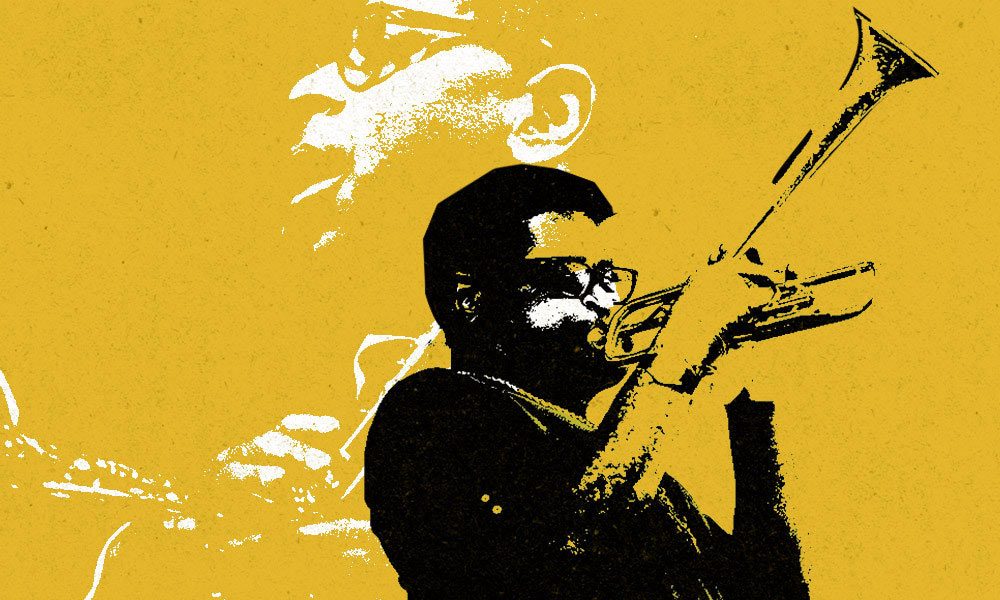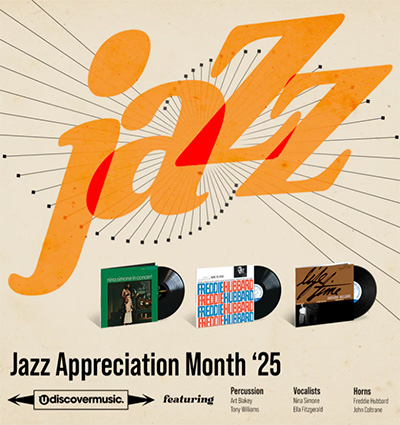How The Newport Jazz Festival Changed The Live Jazz Experience Forever
Explore how the Newport Jazz Festival survived riots, rock, and revolution to birth some of jazz’s greatest live albums.

In 1954 the smallest state in America started a tradition that changed the live jazz experience forever. Since then, the Newport Jazz Festival has been on board for every evolutionary phase of the music — bop, cool jazz, fusion, free jazz, whatever mode was making waves wound up on its stage. Luckily, the magic that masters like Dizzy Gillespie, John Coltrane, Gerry Mulligan, Ella Fitzgerald, and Cecil Taylor worked at Newport is captured on decades’ worth of live albums that remain as vital to the story of jazz as they are to the legacy of the festival.
From clubs to crowds
The Newport story began when moneyed couple Elaine and Louis Lorillard met pianist George Wein. Wein was running the Boston jazz club Storyville, and the jazz-loving Lorillards had a vision of taking the music beyond smoky clubs and small crowds, to an open-air summertime festival in their hometown, for a family-friendly seaside vacation vibe. With the Lorillards’ deep pockets to draw from, Wein made it so.
The inaugural 1954 event at the Newport Casino’s tennis stadium was actually called the American Jazz Festival. It introduced Wein’s open-minded booking strategy, for which the festival would become famous. Leaders of every school of jazz shared a bill, as Dizzy, Ella, Mulligan, Milt Jackson, Errol Garner, and more strutted their stuff on July 17-18. Jolting juxtapositions like Eddie Condon’s Dixieland riffs and Lennie Tristano’s brainy modernism proved both enriching to the audience and helpful to jazz as a whole. The concept clicked and continued, moving just around the bend to Freebody Park in ‘55 under its better-known name.
The solo heard ‘round the world’
Duke Ellington famously remarked, “I was born at the Newport Jazz Festival on July 7, 1956.” That’s where his career rebounded with the solo heard “round the world.” Duke’s popularity had been on a downturn, but when Paul Gonsalves tore into a wailing, six-and-a-half-minute tenor sax solo in the middle of “Diminuendo and Crescendo in Blue,” with Ellington egging him on like a baseball fan whose team is about to take the pennant, the fans lost their minds, and they nearly rioted when the band tried to leave the stage at the end of the set. You can hear it all happen on Ellington at Newport, and the aftershocks of that explosion sent Duke’s fortunes sailing upward again.
That success did plenty to whet jazz lovers’ appetites for other artists’ live Newport recordings. Verve Records founder Norman Granz brought his recording gear to the 1957 festival and went hog wild. Before the year was out, an avalanche of Newport albums appeared on the fledgling label. The Basie band unleashed Count Basie at Newport, documenting the bluesy, hard-swinging set at the 1957 festival that brought a real murderer’s row to the stage – with the return of early members like Jimmy Rushing and Lester Young – alongside newer recruits like Roy Eldridge and Joe Williams. The traditional side was represented by the mighty triumvirate of Red Allen, Kid Ory, and Jack Teagarden on their At Newport LP, bringing some old-school Dixieland stomp to New England with standards like “Muskrat Ramble” and “Basin Street Blues.”
The future of jazz
The future of jazz could be glimpsed among Verve’s ‘57 releases too. When Cecil Taylor played Newport that year with his classic quartet including bassist Buell Neidlinger, drummer Dennis Charles, and sax man Steve Lacy, the pianist hadn’t yet perfected the fearless avant-garde approach that would help reshape jazz in the 60s, but he was well on his way, and the results reside on his half of the At Newport album that his squad shares with the bop-based Gigi Gryce-Donald Byrd Jazz Laboratory.
Speaking of bebop, Dizzy Gillespie was in a big-band phase when his 1957 set was released on Dizzy Gillespie at Newport. His band was loaded with bruisers like Benny Golson on tenor, Wynton Kelly on piano, and a teenage Lee Morgan on trumpet. If there had been a roof, their set would’ve blown a hole through it, encompassing bop burners, ballads, blues, Latin cookers, and even a guest appearance from piano priestess Mary Lou Williams.
Challenging gender and culture norms
In its first few years, the Newport Jazz festival challenged gender and culture norms of the day, introducing Americans to female musicians from around the globe. Pianists Toshiko Akiyoshi from Japan and Jutta Hipp from Germany both played Newport in 1956. Hipp’s time in the spotlight would be brief, but Akiyoshi was just beginning a long, illustrious career, and her Newport set from the following year would be released decades later on Amazing Toshiko Akiyoshi.
History lionizes the late 50s as a golden moment in jazz, and the festival had a hand in stoking that glow. The string of classic At Newport albums kept on coming over the next couple of years: Ella Fitzgerald and Billie Holiday sharing a split LP; the Oscar Peterson Trio augmented by Sonny Stitt, Roy Eldridge, and Jo Jones; and Coleman Hawkins’ All-Stars dream team (also featuring Eldridge and Jones) are just a few from that August crew.
The spirit of the period was caught on film by Bert Stern and Aram Avakian in 1959’s Jazz on a Summer’s Day, shot at the 1958 festival, and revered as something like the jazz equivalent of the Woodstock documentary. Capturing the event’s eclectic firepower, the movie spotlights searing performances from Anita O’Day, Gerry Mulligan, Sonny Stitt, Jimmy Giuffre, and others, and its release brought the Newport Jazz Festival to the minds of more people than ever before.
Growing pains
Growing pains impacted the festival in 1960, when throngs who were turned away from the sold-out event became drunk and disorderly enough to start a full-blown riot in the streets of Newport. Things got so bad the National Guard was summoned and the second half of the festival was canceled. Wein and company were disinvited for 1961, and a different promoter hosted an under-attended jazz weekend in Newport under another name instead. By 1962, however, all was seemingly forgiven, and it was business as usual once more.
Jazz was doing some growing of its own by the mid-60s, and the festival reflected those changes. John Coltrane had already begun working with his “classic quartet” of pianist McCoy Tyner, bassist Jimmy Garrison, and drummer Elvin Jones by the time he made his Newport Jazz Festival debut in 1963. And though Trane’s Newport ‘63 album wouldn’t be released for 30 years, his set at the festival (with Roy Haynes taking the drum stool) was a big, bold blast of liberation from bebop convention, especially on the roiling, open-ended “Impressions.”
By 1965, a coterie of jazz visionaries was pushing the envelope alongside Coltrane, and New Thing at Newport found Trane sharing an LP with one of the front-runners. The title comes from the tag given to the first wave of avant-garde jazz. Besides a couple of blazing Coltrane tunes, the album presents another sax adventurer on a quest for new horizons, Archie Shepp, joined by drummer Joe Chambers, bassist Barre Phillips, and vibraphone master Bobby Hutcherson in a set of luminous abstractions that seem to strike a blow in the name of Cubist jazz.
Rock invasion
By this time, the rising popularity of rock was becoming an elephant in the room. Jazz’s share of the market was starting to shrink. There had been a couple of isolated rock incursions onto the Newport stage – Chuck Berry did a set backed by jazzers in 1958 and was included in Jazz on a Summer’s Day, and The Blues Project somehow slipped in the back door in 1967. But in an attempt to attract younger listeners, six weeks ahead of Woodstock, the 1969 festival opened its gates to a slate of rock acts with roots traceable to jazz and blues, including John Mayall, Led Zeppelin, Ten Years After, Blood Sweat & Tears, The Mothers of Invention, and the Jeff Beck Group.
In a development that must have given some a serious case of déjà vu for 1960, overflow crowds caused major disturbances, and Zeppelin’s appearance was nearly canceled. Lesson seemingly learned, an all-jazz weekend was booked for 1970, but when the blues-loving Wein allowed the Allman Brothers Band onto the 1971 bill, gate-crashing rabble-rousers arrived by the thousands and the festival was shut down halfway through. After that debacle, just like a decade earlier, the town gave The Newport Jazz Festival the boot.
Embracing cross-pollination
Ousted from its home, The Newport Jazz Festival set up shop in New York City in 1972 and remained there through 1980. But the festival finally returned to its original location in 1981 and has remained there ever since. Along the way, George Wein spread some of the love around the country and across the ocean by establishing other annual jazz events that have long since become beloved institutions: The Monterey Jazz Festival, The New Orleans Jazz & Heritage Festival, and the Montreux Jazz Festival. And that’s not even mentioning Newport Jazz’s famous sibling, The Newport Folk Festival.
The indefatigable Wein remains at the helm after all these years, though bassist/bandleader Christian McBride became the Artistic Director in 2016. Newport has continued to honor the old school while encouraging innovators on the rise, as jazz – always a mutable form embracing cross-pollination – became increasingly boundary-free in the information age, producing fresh amalgams.
In recent years, the Newport stage has welcomed new generations of jazz explorers, like Esperanza Spalding, Gregory Porter, Robert Glasper, Ravi Coltrane, Trombone Shorty, and Sons of Kemet, to name a mere few. And the modern era hasn’t been without its own recorded evidence of the festival’s electricity, like New Orleans trumpeter Christian Scott’s fusion-inflected Live at Newport or sax man James Carter’s groove-conscious organ trio album Live From Newport Jazz.
There have been plenty of archival releases too, like Coltrane’s aforementioned Newport ‘63; the 1999 Sarah Vaughan collection Linger Awhile: Live at Newport and More, which included tracks from her 1957 Newport set; and The Best of Newport ‘57, released half a century after the fact and including some of that weekend’s other shining moments from a host of heavyweights including Ella Fitzgerald, Oscar Peterson, Cecil Taylor, and Toshiko Akiyoshi.
The 2020 Newport line-up was set to feature Joe Lovano, Nicholas Payton, Robert Glasper, Chris Potter, Norah Jones, and plenty more. But like so many other things, those plans were squashed due to the pandemic, making 2020 the first year since 1961 with no Newport Jazz Festival. But if there’s any upside to this uncustomary pause, maybe it’s the extra time jazz lovers can spend digging deeply into the albums that chronicle the Newport Jazz journey in all its endlessly evolving glory.
Looking for more? Discover the 50 Greatest Jazz Albums.















Martha E. Luján
August 31, 2020 at 5:10 am
Love hearing good cool jazz again. It’s been so long. I’m 82 years old now but I still love the music. Thank you.
Charles R Drago
October 3, 2020 at 8:20 pm
I was honored to serve as the on-stage master of ceremonies of the Newport, RI edition of the NJF from 1981 through 1984. George Wein throughout was the consummate gentleman as well as ideal employer. Thanks to him, I was able to spend invaluable time with the likes of Ella Fitzgerald, Dizzy Gillespie, Dave Brubeck, Dexter Gordon, Stan Getz, McCoy Tyner, Freddie Hubbard, and other heroes. I even went one-on-one with Miles Davis, who I introduced on stage with my back to the audience.
Heady times, indelible memories, all because of the man who insisted I call him “George.”
God bless you sir.